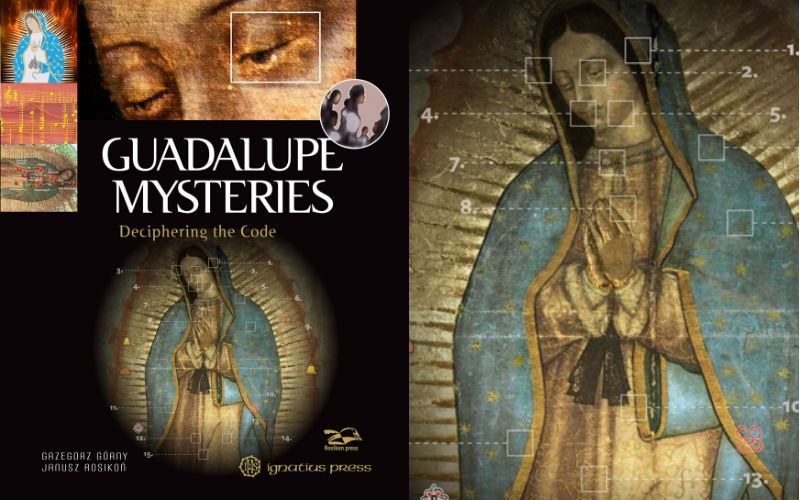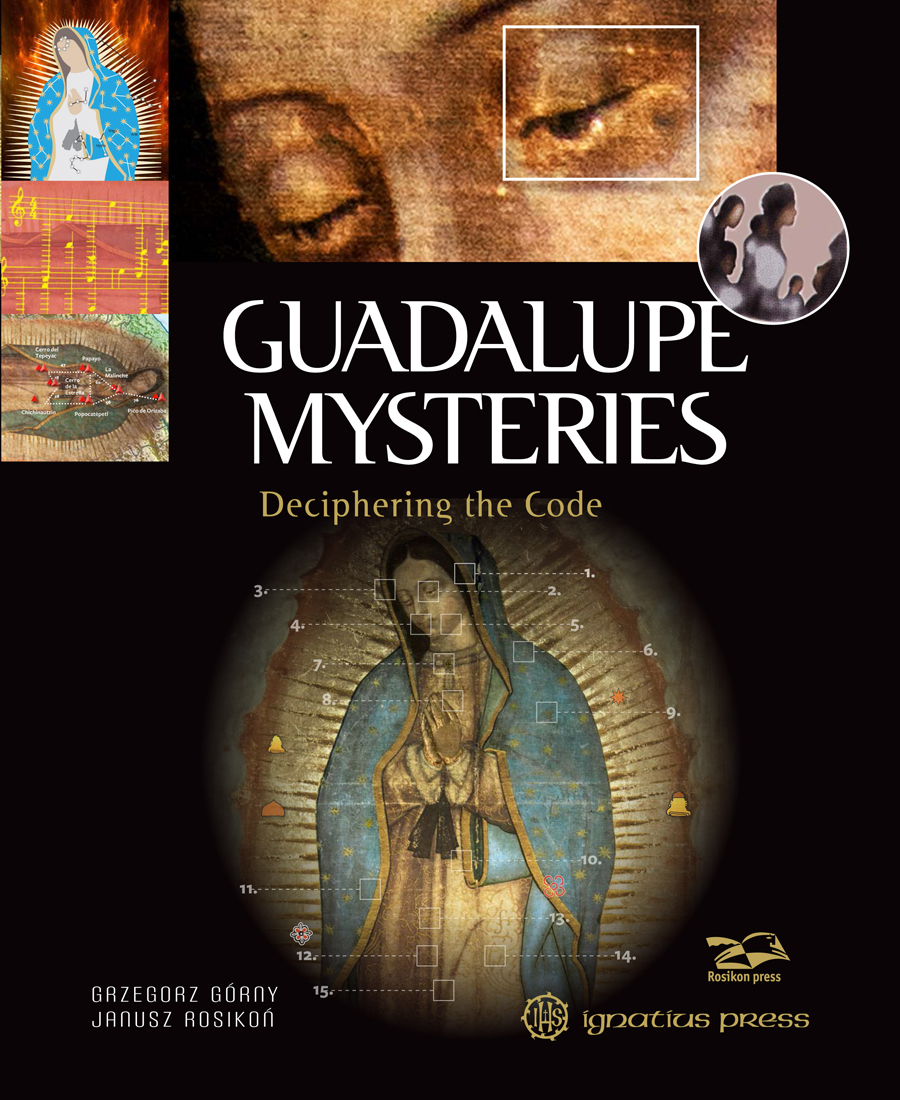Sponsored content from Ignatius Press.
Mexico is home to the most visited Catholic pilgrimage site in the world, and the world’s third most visited sacred site: the Basilica of Our Lady of Guadalupe in Mexico City. The Basilica houses the image of Our Lady of Guadalupe, which has comforted, confounded and converted millions for nearly 500 years.
In their glorious, lavishly illustrated book, Guadalupe Mysteries: Deciphering the Code, the renowned author-photographer team Grzegorz Górny and Janusz Rosikon take the reader on an illustrated pilgrimage to Our Lady of Guadalupe. They tell the amazing story of her apparition to Juan Diego in 1531 and its dramatic impact upon the destiny of an entire people. They interview the various experts on the image and reveal its symbolic messages, those of the past and those speaking to us today.
New and evolving technological developments pertaining to Our Lady of Guadalupe are discussed in detail in Guadalupe Mysteries: Deciphering the Code.
For example, it wasn’t until 1929 when the official Basilica photographer Alfonso Marcue Gonzales first discovered an image in the eyes of the Blessed Mother of Guadalupe. As technology improved, several studies were conducted into these images. In 1979, a Peruvian engineer, Jose Aste Tonsmann, discovered a group of 13 people in Mary’s eyes, a discovery that was confirmed in 2006 by another engineer using the most up-to-date technology. It is believed that these people represent those who were present at the very moment when Juan Diego presented the image of Our Lady to Bishop Zurmarraga who didn’t seem to believe him at first.
It’s confounding because the image’s iris measures only 5/16 of an inch, and easy to believe the author’s contention that no human could have painted “such a precise image on such a small surface, observing virtually 100 percent conformance with the laws of optics, which were not known until the nineteenth century.”
Another fascinating fact has to do with the material on which the image is presented. The tilma was constructed of agave thread. This type of material isn’t durable; it’s expected to wear out within 20-40 years. But the material on which appears the image of Our Lady of Guadalupe is virtually unscathed after nearly 500 years, which is miraculous, especially since no real effort at preservation has been made. In fact, it didn’t even have the protection of a glass encasement during the first 100 years of its existence. Instead, it was exposed to incense, candle smoke and other unfavorable elements.
There was a time when pilgrims were able to directly touch, kiss and even place their faces directly against the tilma, yet no marks were left on the material. The image famously survived at least two episodes that should surely have been destructive. One includes dynamite that exploded after being placed by the altar where the image hung. Not even a scratch was left on the protective glass while windows were shattered in nearby houses.
In 1791 nitric acid was accidentally spilled on part of the image while the frame was being cleaned. This accident should have instantly put a hole in the fabric. Instead, only minor damage was done in the form of stains, and even those eventually faded.



